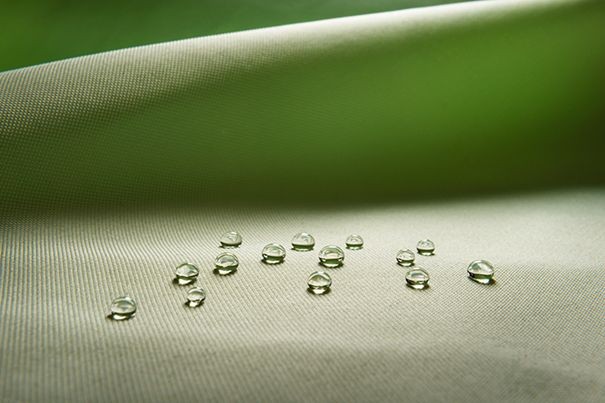Environmentally friendly enhancement of cellulose based materials such as wood, textiles and paper products.
An alternative method for the enhancement of cellulose based material such as wood, textile and paper, Organoclick reduces energy and toxic chemical usage through the use of bio-based catalysts. The method, which is based on organocatalysis and click chemistry, is already implemented in several commercial products within different application areas.

The challenge
Demand for cellulose-based products such as wood, textile and paper is growing in many industry branches. Certain characteristics are commercially attractive for these products: strength, water repellence and fire resistance are often required in building and construction, papermaking and textiles. Traditional production methods and treatments require large amounts of energy and toxic chemicals which have an impact on the environment. Sustainable construction, sustainable manufacturing and the overall sustainable development of these cellulose-based products calls for new, environmentally friendly solutions.
The innovation
The Swedish company OrganoClick delivers an effective, cost-efficient and environmentally sound production alternative to meet these challenges. Their process replaces existing toxic and energy-intensive methods with a ground-breaking bio-substitution approach based on mild and naturally occurring catalysts and non-toxic solvents. The innovation is based on two technologies: organocatalysis and click chemistry. It delivers an environmentally sound and high-yield reaction to covalently bind functional groups to the cellulose fibres.
These processes can produce water-resistant paper and textiles, impregnate wood against rot, fungus and fire or add antibacterial characteristics, colour and strength to a material. The methods can be applied at low temperature, which decreases the demand for energy in the production process. The result: functional and smart textiles, paper and wood with less environmental impact.
Why did it work?
The fundamental scientific innovation was developed through academic research at Stockholm University and the Swedish University for Agricultural Sciences in Sweden, during the 1990s and the early 2000s. This knowledge base resulted in the build-up of a technology platform for the modification of cellulose fibres. No actual product was created at this stage, instead the scientists and entrepreneurs turned to potential customers to design the products that these users regarded indeed as important for this innovation. Hence, the customers contributed real needs and applications to the innovation development, and shared the risks as well through financial investments. Thus, the innovation was developed much according to market needs and was given a first important market.
After the breakthrough in the early 2000s, the first patent was filed in 2004 and the company was created in 2006. An innovation management company that specializes in commercializing university research was tied to the newly formed company. Some initial support was provided from public funding for development and demonstration and a first development project commenced. Several projects were then undertaken together with potential customers to develop the right products. Soon larger investors and equity funding were attracted.
Further development
The company is now entering an expansion phase with focus on market and business development into a global market with their products in all three application fields: wood, textile and paper. Also the construction of a new national production facility will help scale up the technology application, which already reaches beyond 9 on the TRL scale.
